Mapuche
 From Nwe
From Nwe | Mapuche |
|---|
 |
| Total population |
| ca. 900,000 |
| Regions with significant populations |
| Languages |
| Mapudungun, Spanish |
| Religions |
| Own religion plus Christianity (Catholicism and Evangelicalism) |
| Related ethnic groups |
| Picunche |
Mapuche (Mapudungun; Che, "People" + Mapu, "of the land") are the Indigenous inhabitants of Central and Southern Chile and Southern Argentina. They were known as Araucanos (Araucanians) by the Spaniards but this is now considered pejorative by the people, and the term Mapuche is the one most often used by people in conversation and in the media in Chile and Argentina.
They are the only undefeated indigenous people in South America, having maintained their independence against the Inca empire, and later the Spanish, for over 300 years. To do so, they reorganized their traditional way of life, gathering together previously separate villages into strong alliances. Today, they experience great difficulty finding cultural survival. Expansion into their forest regions, leading to disputes over land, threatens the Mapuche way of life. Traditionally surviving on what is basically subsistence agriculture, supplemented by their skills in silver-working, many contemporary Mapuche have chosen to leave this lifestyle and seek a more modern life in the cities. Having resisted domination by outsiders for so long, it may be time for the Mapuche to find the way to balance their traditional way of life with the advances offered by others and take their place in the emerging world of peace and prosperity for all.
Overview
The Mapuche are a wide-ranging ethnicity composed of various groups which shared a common social, religious, and economic structure, as well as a common linguistic heritage. Their influence extended between the Aconcagua River and the Argentine pampa. The Mapuche (note that Mapuche can refer to the whole group of Picunches, Huilliches, and Mapuches from Araucanía or exclusively to Mapuches from Araucanía) inhabited the valleys between the Itata and Toltén Rivers, as well as the Huilliche, the Lafkenche, and the Pehuenche. They were known as Araucanos (Araucanians) by the Spaniards, but this term is no longer acceptable by the Mapuche. Contrary to popular belief, the Quechua word Arauco (rebel), is not the root of Araucano: It is more likely derived from the placename Arauco, meaning "clayey water" in Mapudungun.[1]
The northern Aonikenk, called Patagons by Ferdinand Magellan, were an ethnic group of the pampa regions that made contact with some Mapuche groups, adopting their language and some culture (in what came to be called the Araucanization); they are the Tehuelche.
According to genetic studies, most Chilean Mapuche possess some non-aboriginal ancestry, and over 60 percent of Chile's non-aboriginal population possess Native American ancestry, in varying degrees, although until recently very few Chileans would admit their Native American admixture. There were 604,349 Mapuche according to the census of 2002, making up approximately 4 percent of the Chilean population, while an estimated 300,000 live on the other side of the Andes in Argentina. Due to the loss of their lands, many Mapuche now live in impoverished conditions in large cities, such as Santiago. Mapuche resistance continues, especially against the large forestry companies exploiting traditional lands. Pinochet-era anti-terrorism laws have frequently been used in recent years against certain community leaders and Mapuche political activists.
History
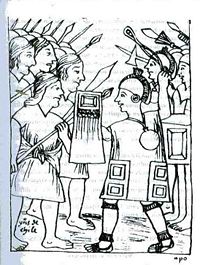
The origin of the Mapuche people is not clear. The Mapuche language, Mapudungun, has been classified by some authorities as being related to the Penutian languages of North America. Others group it among the Andean languages,[2] and yet others postulate an Araucanian-Mayan relationship.[3] Still others have advanced the hypothesis that it is related to Arawak. Research has found many similarities between Mapuche and Polynesian cultures, including pre-columbine chickens that have been determined to have come from Polynesia by analyzing their DNA.[4] One of the earliest human occupation sites of the Americas, Monte Verde, lies within what was later to become Mapuche territory, although there is currently no proved relation between Monte Verde people and Mapuche.
War of Arauco and Treaty of Killin
The Mapuche successfully resisted many attempts by the Inca Empire to subjugate them, despite their lack of central nationwide organization. At the time of the arrival of Europeans, the Mapuche were capable of sufficiently organizing themselves to create a network of forts and complex defensive buildings but also ceremonial constructions, such as the mounds discovered near Purén.[5] They quickly adopted metal-working and horseback-riding from the Europeans, along with the cultivation of wheat and sheep. In the long 300 year coexistence between the Spanish colonies and the relatively well-delineated autonomous Mapuche regions, the Mapuche also developed a strong tradition of trading with the Spanish/Chileans. It is this which lies at the heart of the Mapuche silver-working tradition, for it was from the large and widely-dispersed quantity of Spanish and Chilean silver coins that the Mapuche wrought their elaborate jewelry, head bands, and so forth.
The first contact with the Spanish in 1536, was welcoming, as well as the next contact when the Spanish returned in 1541. It was not until then that their pretense of coexistence with the Mapuche was exposed. They invaded Mapuche land and began to enslave them, rape their women, pillage their communities, and inflict horrendous torture and mutilation on those who resisted or tried to escape from the inhuman treatment inflicted in the mines or encomiendas. Initial conquests of land by the Spanish in the late sixteenth century were thoroughly repulsed by the Mapuche, and the Mapuche went on the offensive and marched all the way to Santiago, destroying Spanish enclaves on the way. Under the command of Toki Leftraru they captured Pedro de Valdivia, often referred to as the Conquistador of Chile, in January 1550. He was tried under Mapuche law and executed. Their victory was so complete that there were areas where Europeans did not return to until late in the nineteenth century.
The long Mapuche resistance has become primarily known as the War of Arauco, and is immortalized in Alonso de Ercilla's epic poem, La Araucana. These indigenous people defeated the most powerful nation on earth. The Mapuche forces employed diverse military strategies and tactics that had constantly surprised the invaders with their intelligence, creativity, and determination. This was widely documented by Spanish historians. The Spanish loss in soldiers and resources in this war was greater than losses through all other conquests throughout the Americas combined.
On January 6, 1641, the Mapuche nation and the Spanish Empire signed the treaty of Killin, in which the Spanish Crown recognized the territorial autonomy of the Mapuche nation. For more than two hundred years, the Bío-Bío river was respected as a natural frontier and the lands to the south of this boundary was respected as the sovereign territory of the Mapuche nation with full self-determination.
The Mapuche are the only indigenous people in South America to have been able to obtain recognition of full autonomy and sovereignty. There were 28 subsequent treaties further clarifying through diplomatic relationship the specific details of the relationship between the two countries. There were long periods of substantial trading and interchange between Mapuche and Spanish/Chilean civilizations.
Occupation of the Araucanía
When Chile split from the Spanish crown, some Mapuche chiefs sided with the colonists; most, however, regarded the matter, if they regarded it at all, with relative indifference. This lack of concern illuminates the degree to which the Mapuche perceived that they were their own people on their own land, and did not realize the potential threat the new nation would pose to their culture. After Chile's independence from Spain, the Mapuche coexisted and traded with their neighbors, who prudently remained north of the Bío-Bío River, although clashes occurred frequently.
Finally, partially on the pretext of crushing a French filibusterer, Orelie-Antoine de Tounens, who had declared himself "King of Araucania," the Chilean state overwhelmed the Mapuche lands in the mid- to late-1880s, during the so called "pacification of the Araucanía." Significant factors leading to this conquest were increased Chilean population pressures on the Mapuche borders, and the fact that by the 1880s, Chile consisted of territory to the north and south of the Mapuche heartlands. In essence, the Mapuche were being demographically squeezed from the North and the South, and were militarily squeezed during the war of conquest. Further, Chile in the 1880s, as a result of its preparation for and its victory in the War of the Pacific against Bolivia and Peru, found itself with a large standing army and a relatively modern arsenal for the period (most concretely seen and felt in the repeating rifle). These were turned upon the Mapuche.
Using a combination of force and diplomacy, Chile's government and some Mapuche leaders signed a treaty incorporating the Araucanian territories into Chile. The immediate impact of the war was widespread starvation and disease. It has been claimed that the Mapuche population dropped from a total of one-half million to that of 25,000 within a generation,[6] though the latter figure has been called an exaggeration by a variety of authorities. In the post-conquest period, however, there did exist internment of a significant percentage of the Mapuche, the wholesale destruction of the Mapuche herding, agricultural and trading economies, the wholesale looting of Mapuche property (real and personal—including a large amount of silver jewelry to replenish the Chilean national coffers), and the creation and institutionalization of a system of reserves called reducciones along lines similar to North American reservation systems. Subsequent generations of Mapuche reside in extreme poverty as a direct result of being conquered and pillaged.
Culture
The Mapuche economy has been based on agriculture, although they have never practiced highly intensive or productive forms of farming. They supplemented their vegetable crops by hunting and fishing, and kept llamas for their wool and as pack animals. Their wealth was calculated by the size of their llama herd. Their social organization consisted of extended families, under the direction of a "lonko," or chief.
Mapuche languages
Mapuche languages are spoken in Chile and to a smaller extent in Argentina. They have two branches: Huilliche and Mapudungun. Although not related, there is some discernible lexical influence from Quechua. It is estimated that only about 200,000 full-fluency speakers remain in Chile, and the language still receives only token support in the educational system. In recent years, it has started to be taught in rural schools of Bio-Bio, Araucanía and Los Lagos Regions.
Political and social organization
The Mapuche economy is based on agriculture, trade, and manufacturing. They became very skilled at using the Spanish silver for jewelry making.
The Mapuche have had a social organization extending from family units, or lofs. They utilized a council with members having fairly equal status in participation, under the direction of a lonko, or chief, who may be male or female. The traditional political structure of the Mapuche people is reproduced within the structure of the Mapuche territorial entity. It is organized into four geographical regions, or Meli wixan-mapu. Each wixan-mapu is made up of aylla rewe (eight districts) which, in turn, are made up of communities known as lofs.
This council includes the machi (shaman), a spiritual guide or doctor; the Werrken who is a spokesperson, ambassador or messenger; the Ngenpin who is a treasurer, master of ceremony and historian and the Ñidol who instructs on laws and codes of practice. All members of the meli wixan-mapu are responsible to uphold the legal judgments passed by the Ad-mapu or the code of practice, which regulates and punishes their misconduct and responsibility to the community.
In times of war they would unite in larger groupings and elect a toki (or ax-bearer) to lead them for that time only, after which that position once again dissolved.
Mythology and beliefs
Central to Mapuche belief is the role of the "Machi" (Shaman). It is usually filled by a woman, following an apprenticeship with an older Machi, and has many of the characteristics typical of shamans. The Machi performs ceremonies for curing diseases, warding off evil, influencing weather, harvests, social interactions, and dreamwork. Machis often have extensive knowledge of Chilean medicinal herbs, though as biodiversity in the Chilean countryside has declined due to commercial agriculture and forestry, the dissemination of such knowledge has also declined but is in revival. Machis, also, have an extensive knowledge of sacred stones and the sacred animals.
The most important beliefs of the Mapuche are expressed in the tale, Trentren Vilu y Caicai Vilu, and manifest in the Ngens and Pillans spirits, the Kalku and Wekufe (evil/illness) spirits, the Chonchon, the Piuchen, the Nguruvilu) and La Calchona.
An equally important part of Mapuche belief and society is the remembered history of independence and resistance from 1540 (Spanish and then Chileans) and of the treaty with the Chilean government in the 1870s. In that perception, it is important to include, not exclude, Mapuches in the Chilean culture. Having said that, memories, stories, and beliefs, often very local and particularized, are a significant part of the Mapuche traditional culture. To varying degrees, this history of resistance continues to this day amongst the Mapuche, though at the same time a large majority in Chile would also strongly include themselves as Chilean similarly to a large majority in Argentina including themselves as Argentines.
Chemamull statues and mounds
Chemamüll (Mapudungun: from che, people and mamüll, wood, Wooden people) are statues made of wood used by the Mapuche to mark the grave of a deceased person.
The chemamüll are carved wooden statues, usually more than two meters tall and represent the stylized body and head of a human being. Statues may have male or female features. These statues are part of the mound culture that permeates the Mapuche world. To them, the mound complete with chemamüll that they create is alive. The mound is partly a cemetery, but more importantly a link with the living past and used by the shamans as a guide for the future. The mounds near the Bío-Bío River are still in use today, and offer the anthropologist and ethnologist a unique opportunity to understand the more ancient mounds.
Mound cultures are relatively sophisticated, and in the Purén and Lumaco Valley there are more than 300 mounds. Many of these consist of large complexes overlooking expansive marshes, or ciénegas, and are associated with extensive domestic sites, agricultural systems, and occasionally hilltop defenses. It has been suggested that the ceremony and ritual of the mounds was essential in helping the Mapuche to be successfully organized in their long resistance, though seemingly hampered by the absence of centralized government.
Contemporary Life
Mapuche descendants now live across southern Chile and Argentina; some maintain their traditions and continue living from agriculture, but a growing majority have migrated to cities in search of better economic opportunities. Chile's region IX continues to have a rural population made up of approximately 80 percent; there are also substantial Mapuche populations in regions X, VIII, and VII.
Since the 1990s, there has been an attempt by the Chilean government to redress some of the inequities of the past, by, for example, validating the Mapudungun language and culture by including them in the curriculum of elementary schools around Temuco. Nevertheless, land disputes and violent interactions do continue in some Mapuche areas, particularly in the northern sections of the IX region between and around Traiguén and Lumaco—where a history of conflict continues into the present.
Representatives from Mapuche organizations joined the Unrepresented Nations and Peoples Organisation (UNPO) seeking recognition and protection for their cultural and land rights.
Though Japanese and Swiss interests are active in the region that Chileans call "Araucanía" and the Mapuche call "Ngulu Mapu," both of the main forestry companies are Chilean-owned. On land the Mapuche claim is theirs, the firms have planted hundreds of thousands of acres with Monterey pine and eucalyptus trees, species that are not native to the region and that consume large amounts of water and fertilizer.
Chilean exports of wood to the United States, almost all of which come from this southern region, are valued around $600 million a year and rising. Though an international campaign led by the conservation group Forest Ethics resulted in the Home Depot chain and other leading wood importers agreeing to revise their purchasing policies, to "provide for the protection of native forests in Chile," some Mapuche leaders were not satisfied.
In an effort to defuse tensions, a special government body, the Commission for Historical Truth and New Treatment, issued a report in 2003, calling for drastic changes in Chile's treatment of its indigenous people, more than 80 percent of whom are Mapuche. The recommendations included the formal recognition of political and "territorial" rights for aboriginal peoples, as well as efforts to promote their cultural identity.
Mapuche activists have been prosecuted under counter-terrorism legislation originally introduced by Pinochet. The law allows prosecutors to withhold evidence from the defense for up to six months, and to conceal the identity of witnesses, who may give evidence in court behind screens.
Notes
- ↑ www.serindigena.cl, Mapuche o Araucano. Retrieved December 15, 2007.
- ↑ Greenberg, Language in the Americas (Stanford, CA: Stanford University Press 1987). ISBN 0804713154
- ↑ Stark, Language. Retrieved December 18, 2007.
- ↑ José Miguel Ramírez, Transpacific Contacts: The Mapuche Connection. Retrieved December 10, 2007.
- ↑ Tom Dillehay, Monuments, Empires, and Resistance: The Araucanian Polity and Ritual Narratives (New York: Cambridge University Press, 2007). ISBN 9780521872621
- ↑ Ward Churchill, A Little Matter of Genocide, 109.
References
ISBN links support NWE through referral fees
- Bacigalupo, Ana Mariella. Shamans of the Foye Tree: Gender, Power, and Healing Among Chilean Mapuche. 2007. ISBN 9780292716582
- Dillehay, Tom. Monuments, Empires, and Resistance: The Araucanian Polity and Ritual Narratives. New York: Cambridge University Press, 2007. ISBN 9780521872621
- Haughney, Diane. Neoliberal Economics, Democratic Transition, and Mapuche Demands for Rights in Chile. 2006. ISBN 0813029384
- Mallon, Florencia. Courage Tastes of Blood: The Mapuche Community of Nicolás Ailío and the Chilean State, 1906-2001. 2005. ISBN 0822335859
- Ray, Leslie. Language of the Land: The Mapuche in Argentina and Chile. 2007. ISBN 9788791563379
- Reuque Paillalef, Rosa Isolde. When a Flower is Reborn: The Life and Times of a Mapuche Feminist. 2002. ISBN 0822329344
- Smeets, Ineke. A grammar of Mapuche. 2007. ISBN 9783110195583
External links
All links retrieved November 5, 2022.
Credits
New World Encyclopedia writers and editors rewrote and completed the Wikipedia article in accordance with New World Encyclopedia standards. This article abides by terms of the Creative Commons CC-by-sa 3.0 License (CC-by-sa), which may be used and disseminated with proper attribution. Credit is due under the terms of this license that can reference both the New World Encyclopedia contributors and the selfless volunteer contributors of the Wikimedia Foundation. To cite this article click here for a list of acceptable citing formats.The history of earlier contributions by wikipedians is accessible to researchers here:
The history of this article since it was imported to New World Encyclopedia:
Note: Some restrictions may apply to use of individual images which are separately licensed.
↧ Download as ZWI file | Last modified: 02/04/2023 00:14:54 | 2 views
☰ Source: https://www.newworldencyclopedia.org/entry/Mapuche | License: CC BY-SA 3.0
 ZWI signed:
ZWI signed:
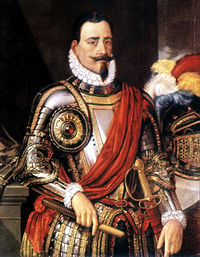
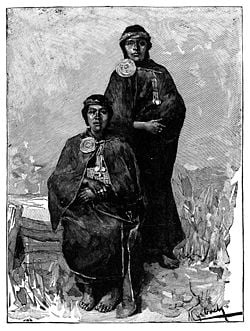

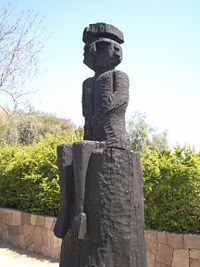
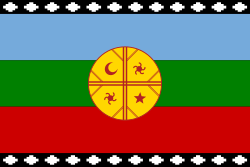
 KSF
KSF